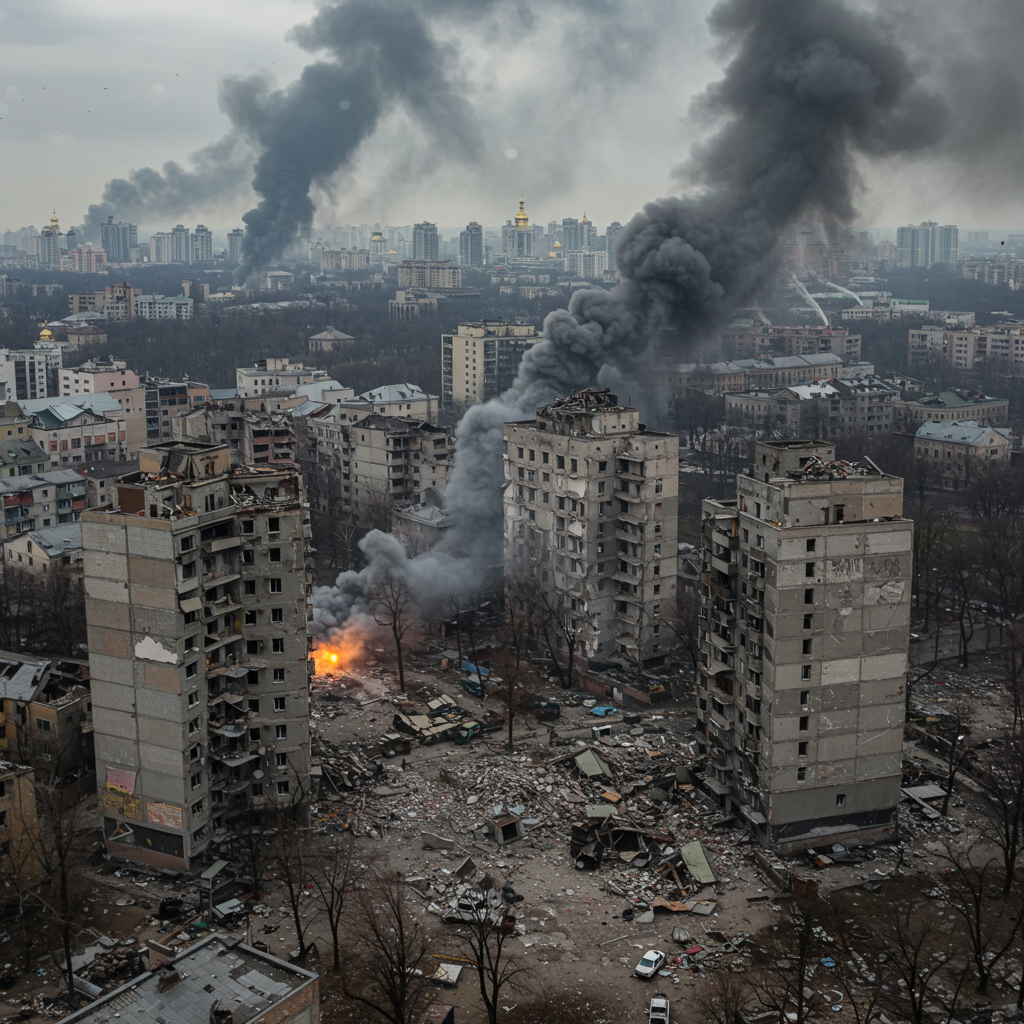A significant diplomatic push is underway, spearheaded by former President Donald Trump, as a comprehensive “21-point plan” aimed at resolving the Gaza conflict and establishing post-Hamas governance garners initial support from a coalition of influential Arab and Muslim leaders. This initiative, presented during the recent United Nations General Assembly in New York, marks a pivotal moment, being the first detailed U.S. proposal unveiled by Trump himself for the besieged enclave. The widespread positive reception, tempered by crucial conditions from regional stakeholders, signals both the urgency for a resolution and the complex path ahead for peace in the Middle East.
Unveiling the “21-Point Plan”: A New Diplomatic Push
On Tuesday, President Trump and White House envoy Steve Witkoff presented a detailed “21-point plan” to high-ranking Arab and Muslim leaders. The ambitious proposal targets an end to the protracted conflict in the Gaza Strip and lays out a framework for future governance in the region following the cessation of hostilities. Initial reports from sources, including Axios and Kan News, suggest a generally positive response from the attendees, underscoring a shared desire to de-escalate the volatile situation.
This marks a notable shift, representing the first occasion Trump has officially put forward a U.S.-led plan to conclude the devastating war in Gaza. While elements of the plan draw from ideas discussed over the past six months and updates developed by Jared Kushner and former British Prime Minister Tony Blair, its formal presentation to such a diverse group of regional powers signifies a renewed, high-level diplomatic engagement. Trump reportedly sought not just their endorsement but also their active commitment to participate in Gaza’s post-war reconstruction and governance.
Core Pillars of the Proposed Gaza Peace Initiative
The detailed American proposal incorporates several key principles designed to achieve a lasting peace and rebuild Gaza. According to sources familiar with the discussions and reports from Arab media, these core tenets include:
Hostage Release: An immediate and comprehensive release of all hostages held in Gaza.
Permanent Ceasefire: A sustained cessation of hostilities, potentially beginning with a 20-day halt in fighting.
Israeli Withdrawal: A gradual and phased withdrawal of Israeli forces from the Gaza Strip.
Post-Hamas Governance: The establishment of a new governing mechanism in Gaza that explicitly excludes Hamas, which both the U.S. and Israel insist must be disarmed and eliminated.
Multinational Security Force: Deployment of a multinational security force to ensure stability and maintain order in the territory.
Financial Contributions: Significant financial contributions from Arab and Muslim countries to fund Gaza’s extensive reconstruction.
Palestinian Authority Involvement: Some level of involvement from the Palestinian Authority (PA) in Gaza’s future administration, despite Israel’s historical reluctance to accept such a role.
President Trump reportedly conveyed to the assembled leaders his view that the continuation of the conflict was increasingly isolating Israel on the international stage, adding pressure for a viable resolution. White House envoy Steve Witkoff expressed optimism, even confidence, at the Concordia conference in New York, hinting that a breakthrough could be announced in the coming days.
Regional Responses and Crucial Conditions
The high-stakes meeting convened leaders and senior officials from a broad spectrum of nations, including Saudi Arabia, the United Arab Emirates, Qatar, Egypt, Jordan, Turkey, Indonesia, and Pakistan. Following the presentation, several leaders issued joint statements expressing their support for Trump’s initiative, hailing it as a serious and constructive step toward achieving peace.
However, this support was not unconditional. According to multiple sources, the Arab leaders presented Trump with several critical demands for their backing:
No Annexation: Israel must commit to refraining from any annexation of parts of the West Bank or Gaza.
Settlement Freeze: A complete cessation of all settlement construction in Gaza.
Al-Aqsa Status Quo: Preservation of the existing status quo at the Al-Aqsa Mosque in Jerusalem.
- Increased Humanitarian Aid: A substantial increase in the flow of humanitarian aid to the Gaza Strip, addressing the dire crisis on the ground.
- www.israelnationalnews.com
- www.aljazeera.com
- abcnews.go.com
- www.theguardian.com
- www.voanews.com
During the discussions, Trump reportedly made it clear to the Arab and Muslim leaders that he would not allow Israel to annex parts of the West Bank. Notably, Indonesian President Prabowo Subianto, speaking at a UN conference, declared his country’s readiness to contribute peacekeeping forces to Gaza, signaling concrete regional willingness to participate. One Arab official present at the meeting described it as “very good,” stressing Trump’s “definite commitment to ending the war.”
Navigating the Path Forward: Challenges and Next Steps
The diplomatic momentum continued with a follow-up meeting between Secretary of State Marco Rubio, Witkoff, and the foreign ministers of Saudi Arabia, Qatar, the United Arab Emirates, Egypt, and Jordan. The objective of these discussions was to transform the broad principles Trump presented into a more detailed and operational plan.
Israeli officials indicated that Prime Minister Benjamin Netanyahu is generally aware of the U.S. principles. His confidant, Ron Dermer, has reportedly held discussions on the subject with Kushner and Blair. During a separate meeting, Dermer conveyed Israel’s stance: while it does not wish to occupy Gaza long-term, an acceptable alternative to Hamas is urgently needed to govern the enclave. This highlights a persistent challenge—who, precisely, would take over, a question for which Kushner and Blair have yet to find a definitive answer despite receiving Trump’s blessing to continue developing the plan.
The road to peace is fraught with challenges. Previous ceasefire negotiations have faltered, sometimes under tragic circumstances, such as reported Israeli air attacks on Qatar aimed at Hamas leadership or alleged Israeli actions that “torpedoed” earlier deals. The success of Trump’s latest initiative remains contingent on securing the ultimate agreement of Hamas, which has yet to provide a formal response. Amidst these efforts, the Israeli army continues its incursions and air raids across Gaza, with ongoing casualties and widespread destruction, while simultaneously pursuing annexation plans in the occupied West Bank. Reports from Fox News suggest Hamas has drafted a letter to Trump proposing a 60-day truce in exchange for hostage releases, signaling potential avenues for engagement.
Distinguishing Diplomacy: This Plan vs. Prior Controversial Proposals
It is critical to distinguish this recent “21-point plan” presented to Arab leaders at the UNGA from a significantly different and highly controversial proposal earlier presented by Donald Trump in February 2025 during a White House press conference with Benjamin Netanyahu. That earlier vision involved the United States taking ownership of Gaza, forcibly relocating its two million Palestinian residents to other countries, and transforming the territory into a “Riviera of the Middle East.”
That particular proposal, which envisioned dismantling weapons, leveling destroyed buildings, and creating economic development through a Mediterranean resort, drew swift and widespread condemnation internationally. Countries including Britain, China, Germany, and Saudi Arabia unequivocally reaffirmed their support for a two-state solution, directly opposing Trump’s “out-of-the-box idea.” Palestinian President Mahmoud Abbas denounced it as a “serious violation of international law,” while UN human rights chief Volker Türk declared forced deportation illegal. Conversely, Israeli Prime Minister Netanyahu had enthusiastically endorsed this earlier, “revolutionary” vision. The current “21-point plan,” by contrast, focuses on a negotiated ceasefire, phased Israeli withdrawal, and multinational post-Hamas governance, without advocating for forced displacement or U.S. ownership.
The Broader Geopolitical Landscape
The unfolding diplomatic efforts by the Trump team are occurring within a broader, complex geopolitical landscape. Concurrently, nations like France, the United Kingdom, Canada, Australia, and Portugal have formally recognized Palestinian statehood, reflecting growing international pressure for a two-state solution. Furthermore, Saudi Arabia has consistently maintained that any normalization deal with Israel is strictly contingent upon the establishment of an independent Palestinian state, a “firm, unwavering position” affirmed by Crown Prince Mohammed bin Salman.
Echoing this sentiment, Egypt has also articulated its own comprehensive vision for Gaza’s reconstruction, explicitly ruling out the displacement of Palestinians. Cairo’s proposal stresses upholding the Palestinian people’s right to remain in their homeland, avoiding actions that endanger peace, and addressing the conflict’s root cause by ending Israel’s occupation and implementing a two-state solution. This context of diverse international and regional positions highlights the intricate web of interests and demands that any peace plan must navigate.
Expert Insights: Prospects and Hurdles for Lasting Peace
The renewed diplomatic initiative surrounding Trump’s Gaza peace plan, while garnering initial positive responses, faces an arduous journey toward implementation. The inclusion of Arab and Muslim leaders is a critical step, signifying an understanding that regional buy-in is essential for any enduring solution. However, the conditions set by these leaders — particularly regarding annexation, settlements, Al-Aqsa, and humanitarian aid — underscore deep-seated grievances that must be genuinely addressed.
One of the most significant hurdles remains the question of post-Hamas governance. Without a clear, credible, and acceptable alternative leadership for Gaza, the vacuum could quickly lead to further instability. The deep humanitarian crisis, with over 65,000 Palestinian casualties and widespread famine, also demands immediate, effective, and sustained humanitarian intervention, which must be integrated into any long-term peace strategy. The differing perspectives of Israel, the Palestinian Authority, various Arab states, and the international community mean that sustained political will, flexibility, and a commitment to international law will be paramount to transforming a “21-point plan” into genuine and lasting peace.
Frequently Asked Questions
What are the key components of Trump’s “21-point plan” for Gaza?
Trump’s “21-point plan,” presented to Arab and Muslim leaders, includes a commitment to the release of all hostages, a permanent ceasefire, and a gradual Israeli withdrawal from Gaza. It also proposes a new governing mechanism for Gaza that excludes Hamas, the deployment of a multinational security force, significant financial contributions from Arab and Muslim countries for reconstruction, and some involvement from the Palestinian Authority in future governance. The plan draws on ideas from Jared Kushner and Tony Blair.
Which regional leaders and countries have expressed support or set conditions for this Gaza peace initiative?
Leaders and senior officials from Saudi Arabia, the United Arab Emirates, Qatar, Egypt, Jordan, Turkey, Indonesia, and Pakistan attended the meeting and issued a joint statement supporting the initiative. However, they conditioned their support on several demands: Israel must refrain from annexing parts of the West Bank or Gaza, cease settlement construction, preserve the Al-Aqsa Mosque’s status quo, and significantly increase humanitarian aid to the region.
How does this recent Gaza peace plan differ from other proposals for the region’s future?
This “21-point plan” focuses on a negotiated end to the conflict, including a ceasefire, Israeli withdrawal, and multinational governance without Hamas. It explicitly seeks regional buy-in for reconstruction and stability. This differs significantly from a controversial prior proposal by Trump in February 2025, which suggested the U.S. take ownership of Gaza, forcibly relocate its 2 million residents, and develop it into a “Riviera.” That earlier plan faced widespread international condemnation for violating international law and advocating for forced displacement.
Conclusion
The diplomatic discussions surrounding Donald Trump’s “21-point plan” represent a critical moment in the ongoing efforts to bring stability to the Gaza Strip and the wider Middle East. With initial support from key Arab and Muslim leaders, and a clear outline for ceasefire, governance, and reconstruction, the initiative offers a potential pathway forward. However, the path remains complex, requiring genuine commitment to the conditions set by regional partners, a resolution to the critical question of post-Hamas governance, and the ultimate agreement of all parties, including Hamas. As the humanitarian crisis deepens and geopolitical shifts continue, sustained international engagement and a dedication to addressing the root causes of the conflict will be essential in turning this ambitious plan into a lasting peace.


